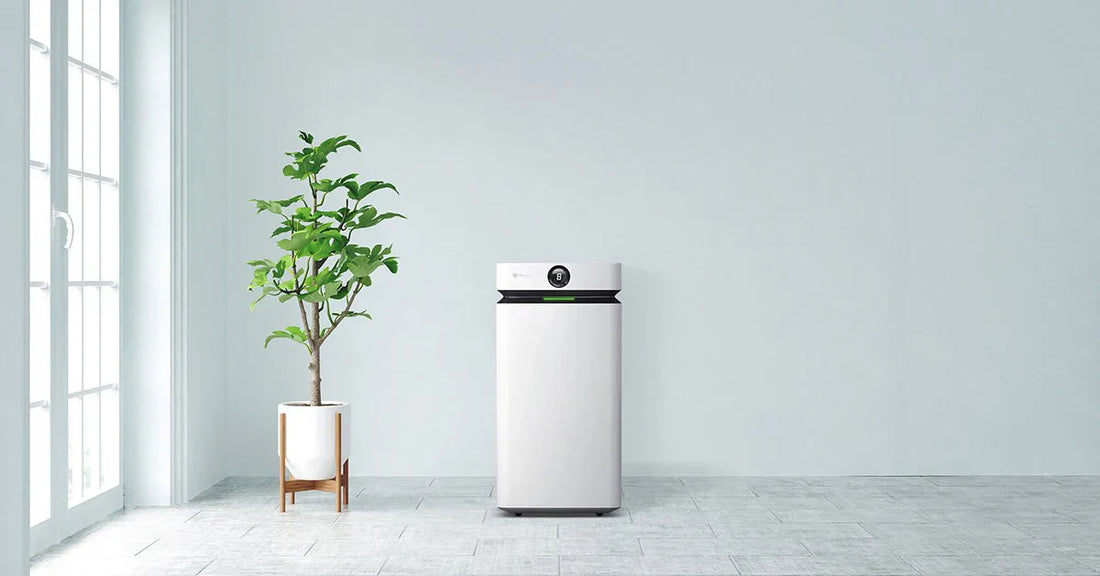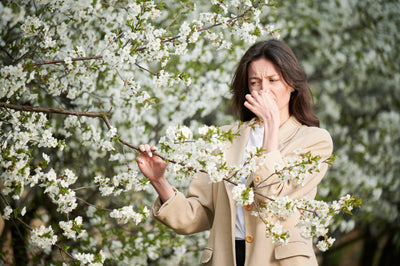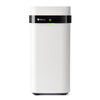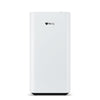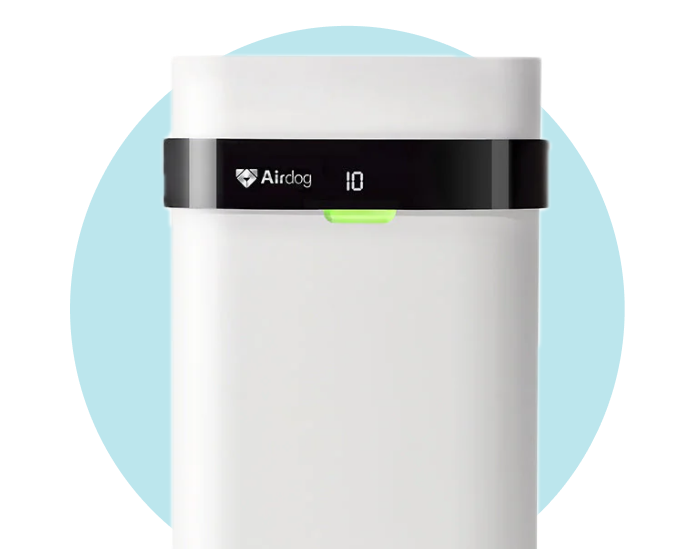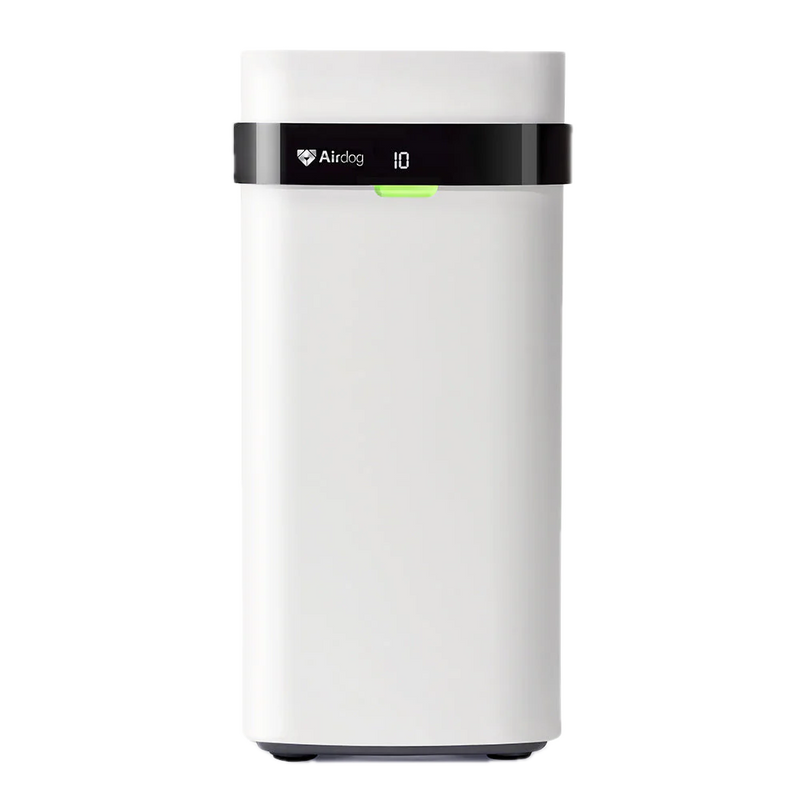The Cost of Running an Air Purifier: Factors to Know
Air purifiers are a necessity in homes focused on better indoor air quality. For many consumers, electricity cost is a key consideration along with the positive health benefits. We all want clean air without overspending on energy bills from air purifier electricity use.
Understanding how much it costs to run an air purifier involves several key factors, including energy usage, unit size, and technology type. Additionally, how much energy an air purifier uses varies based on its design, efficiency, and settings. We'll break it down for you and show how Airdog’s advanced air purifier design can keep your utility costs low while your air stays clean.
What Affects an Air Purifier’s Energy Consumption?
Power Consumption and Wattage
An air purifier typically uses 20 to 100 watts per hour. The wattage depends on the fan speed, unit size, and filtration technology. Look for an energy-efficient model to use lower wattage and smart fan controls to reduce unnecessary energy use.
To estimate energy costs, use this formula:
Wattage × Hours of use ÷ 1000 = Kilowatt hours (kWh)
Energy usage is measured in kilowatt hours, which is the standard unit for electricity consumption. Then multiply that number by your local electricity rate, also known as the kWh cost. The kWh cost is the amount you pay per kilowatt hour and is essential for calculating total expenses.
The average electricity rate in the U.S. is around 17.45 cents per kilowatt-hour (kWh). But this can vary a lot by state. Hawaii is on the high end of the range at an average of 42.44 cents per kilowatt-hour, while North Dakota is on the low end with an average of 11.69 cents/kWh.
An example of calculating air purifier electricity consumption: A 50-watt unit used for 24 hours consumes 1.2 kWh daily. At $0.15 per kWh, the daily cost is $0.18, which adds up to $5.40 per month.
Fan Speed and Continuous Operation
Higher speeds draw more power. Running a purifier on high speed for long periods increases energy usage. Running the unit at the highest fan speed maximizes cleaning performance but also leads to greater energy consumption. Using auto mode or low fan speed during light pollution periods helps save energy without reducing air quality. Running continuously can maintain consistent air quality, but may increase electricity costs.
Room Size and Air Volume
Smaller rooms require less airflow. Large rooms need more powerful units to clean the air effectively. Larger units are designed for bigger spaces and generally consume more power. An oversized purifier running at maximum power in a small room will use more energy than needed.
The clean air delivery rate (CADR) measures how much air is cleaned per minute and helps to match the purifier to the room size. CADR is measured in cubic feet per minute, which helps determine the right unit for your space. Choosing the right purifier for your space prevents energy waste.
What Will an Air Purifier Add to Your Electric Bill?
Let’s compare energy usage across common air purifier models: These costs directly affect your monthly electricity bill.
|
Model Type |
Wattage |
Daily Use (hrs) |
Daily Cost |
Monthly Cost |
|
Standard HEPA Purifier |
70W |
24 |
$0.25 |
$7.50 |
|
Airdog X5 (TPA® Tech) |
11W–40W |
24 (auto mode) |
$0.10–$0.15 |
$3–$4.50 |
|
Large Room HEPA Model |
100W |
24 |
$0.36 |
$10.80 |
Air Purifier models with higher wattage use more electricity, which results in higher costs.
Electricity costs vary by region, but Airdog units can keep consumption low compared to standard air purifiers through our efficient engineering and responsive sensors.
Why Some Air Purifiers Use More Energy
Traditional HEPA Filters Create Resistance
HEPA filters trap particles down to 0.3 microns. While effective at removing pollutants, these filters clog quickly. As the filter fills, the fan must work harder to maintain airflow. That extra strain increases energy use.
Many HEPA-based air purifiers require frequent filter replacements. Most people need to change these filters every 3 to 6 months, each costing between $50 and $150. Clogged filters also trap moisture and become breeding grounds for bacteria.
Airdog’s TPA® Technology Solves Air Purifier Problems
Airdog’s purifiers use Two-Pole Active Filtration Technology (TPA®). This patented system captures and destroys airborne particles as small as 0.0146 microns. That’s far smaller than a HEPA filter can catch.
Airdog units use washable collection plates, not disposable filters. Cleaning the plates every few weeks maintains performance and avoids buildup. Unlike clogged HEPA filters, TPA® technology ensures consistent airflow and stable energy usage.
Real-World Savings: Comparing Energy Costs
Annual operating cost comparison:
-
Typical HEPA Purifier (70W): $0.25/day × 365 = $91.25/year
-
Airdog X5 (average 30W): $0.13/day × 365 = $47.45/year
This makes Airdog purifiers the cost-effective and cleaner solution for your air.
On top of lower electricity bills, Airdog users save hundreds of dollars each year with washable filters, eliminating the need to buy costly new filters.
How to Improve Air Quality Without High Energy Bills
Use Auto Mode to Respond to Real-Time Air Quality
Smart features help match energy use to indoor conditions. This means auto mode can help control how much energy the purifier uses by adjusting performance as needed. Airdog monitors your air and adjusts the fan speed based on pollution levels. Less polluted air needs less power to stay clean. By monitoring air quality, you can optimize the air purifier's energy use for greater efficiency. Over time, these smart features can significantly reduce the system's energy consumption.
Keep the System Clean
Airdog purifiers only need a quick rinse of their washable plates to maintain performance. Regular cleaning is necessary to ensure optimal performance and keep the purifier working efficiently. Cleaning them regularly avoids extra power draw and helps the fan move air efficiently.
Since no home is completely sealed, regular cleaning is important to maintain indoor air quality.
Pick the Right Size for the Room
Choose a model rated for your space. For optimal performance and savings, consider selecting an energy-efficient air purifier that matches your room size. A purifier meant for a small room will work harder than one built for larger spaces. Working harder means higher energy use. A properly sized unit delivers clean air while using less power. Energy-efficient air purifiers provide clean, healthy air with lower energy consumption, helping you save on operating costs.
Position the Unit for Best Results
Place the purifier in an open area, away from walls or obstructions. Good airflow helps it work efficiently at lower speeds. That means less energy is used for the same result.
Clean Air and Energy Efficiency Can Work Together
Air purifiers shouldn't drastically increase your electricity bill. Choosing the right technology, using smart features, and sizing the unit properly all contribute to lower energy use.
Airdog uses TPA® technology to clean air more effectively and with less energy. These units operate quietly, adapt in real time, and provide continuous air purification without increasing power consumption. With high clean air delivery rates and low power cost, Airdog offers long-term savings and better indoor air quality.
Final Thoughts: What to Expect on Your Bill
The amount of energy an air purifier consumes depends on factors like wattage, speed settings, and daily usage hours. Most air purifiers fall between $3 to $10 per month in operating costs. That range depends on the purifier’s wattage, hours of use, and energy efficiency. When factoring in filter costs and maintenance, the numbers increase quickly for traditional models.
Airdog’s design reduces every part of the cost:
-
Lower electricity consumption
-
No replacement filters
-
Better long-term performance
Smart energy use creates a healthier environment without financial strain. Shop Airdog air purifiers now.

